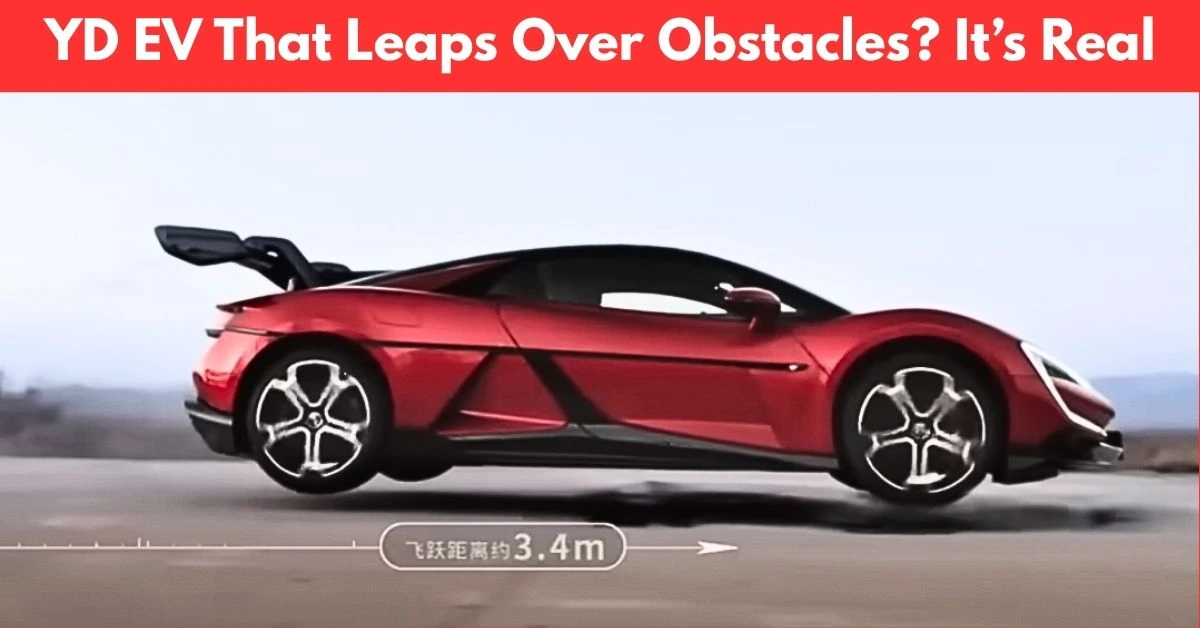Meet the BYD YangWang U9—the electric supercar that doesn’t just go zero to hero in seconds, but also jumps, literally, over obstacles. In a landscape crowded with performance metrics, the “yangwang u9 leap test” has become a viral sensation, showcasing feats like leaping over potholes and spike strips. But beneath the digital smoke and mirrors lies a nuanced story blending technology, spectacle, and a fair dose of controversy.
The Leap Function: Spectacle Over Substance?
What It Does
- Jumping Over Obstacles: The U9’s ads flaunt its ability to leap over potholes, spike strips, and other hazards, even chalk lines on test tracks. The trick is made possible by the car’s advanced Disus-X active suspension system, which compresses and releases with enough force to send the 2.5-ton EV airborne for a brief moment.
- Autonomous Control: Videos have demonstrated the U9 leaping obstacles entirely driverless at speeds up to 120 km/h (about 75 mph). The car’s intelligent body control ensures it lands smoothly without skidding or rolling, even over a 6-meter distance and an 8-centimeter height.
High Performance, High Showmanship
- Speed and Specs: Beyond its party tricks, the U9 is a true high-performance machine—boasting 1,287 horsepower, a four-motor setup, 0–100 km/h in just 2.36 seconds, and a top speed of 391.94 km/h (approx. 244 mph).
- Marketing Milestone: With stunts seemingly plucked from “Knight Rider,” the U9’s leap may not be novel—Bose showcased a similar concept decades ago—but BYD is the first to put it in a production EV.
The Disclaimer: Can You Actually Use It?
- What the Fine Print Says: The leap function comes with a major caveat: “The U9’s leap function is prohibited from being used to leap over obstacles, potholes, slopes or other practical scenarios.” Many assumed this meant the feature was disabled for buyers.
- Reality Check: In practice, the function is off by default and can be enabled only after strict steps outlined in the owner’s manual. The disclaimer is largely for legal and insurance purposes—like “Professional driver, closed course” warnings—protecting BYD from lawsuits should the stunt go awry7.
- Not for Public Roads: The leap’s real-world use is tightly restricted, meant only for demonstration or closed test environments, not for dodging debris on your morning commute.
Mixed Public Reception: Innovation or Gimmick?
- Skepticism Abounds: Many call the leap function “impractical,” “wildly gimmicky,” or outright “useless” in everyday driving. Critics highlight risks of loss of control, the danger of uneven weight loads, and the lack of real utility beyond staged demos.
- False Advertising Allegations: Some accuse BYD of deceptive marketing, but others liken the disclaimers and showmanship to standard industry fare—think supercar “top speed only on track” caveats or sensational Q-tip warnings7.
- Pop Culture Buzz: Fans couldn’t help but crack jokes about the U9 being the closest we’ve come yet to real-life Mario Kart or Knight Rider’s KITT with “Turbo Boost”.
The Tech Under the Magic: DISUS-X Suspension
- How It Works: The leap function is realized via BYD’s DiSus-X Intelligent Suspension System. This system can:
- Instantly adjust damping at all four corners.
- Compress and release upwards of 5 tons of vertical force within milliseconds.
- Achieve jumps of up to 6 meters in distance and 8 centimeters in height—even while maintaining high speeds.
- Innovation With a Nod to the Past: Although similar tech was previously demonstrated by Bose, BYD’s execution brings the concept to a new level with electric drive integration and true autonomous operation9.
Why the Leap? Branding, Tech Demo, and the Future
Under the hood, the leap is less about practical urban use and more about showcasing engineering prowess—a brand statement reflecting BYD’s “because we can” approach to tech. It’s a flashy preview of what’s possible with ultra-advanced, programmable suspension, hinting at a future of EVs with far more adaptive chassis.
Table: YangWang U9 Leap Test Breakdown
| Section/Topic | EvNews Delivers | Sample Line |
|---|---|---|
| Breaking Update | U9 jumps obstacles at 120 km/h, unmanned | “BYD’s leap test wows with tech, stirs debate” |
| Trend Analysis | Social buzz, video views, divided opinions | “Netizens split: genius innovation or pure gimmick?” |
| Policy Watch | Feature locked by default, only enabled with disclaimer | “Leap prohibited except in closed test scenarios” |
| Market Insight | Sets BYD as a tech leader, not just a copycat | “First leaping mass-production EV” |
| Tech Spec/Legacy | DISUS-X suspension, specs, Bose suspension history | “Past concepts, current execution—future potential” |
Key Takeaways: Leap Function’s Real Impact
- Advanced, adaptive suspension in a real-world EV.
- Limited real utility—locked down for safety and liability.
- Spectacle more than substance, but a legit tech leap for marketing and engineering.
- Continues trend of turning sci-fi tricks into automotive reality, if only for the cameras so far.
- May spark further innovation in ride control and chassis tech, just as Bose’s demo did for a previous generation.
In the world of electric supercars, sometimes being “a little bit weird” is exactly the point. The YangWang U9 leap test might not change your daily drive, but it just might change what automakers dare to dream next.

